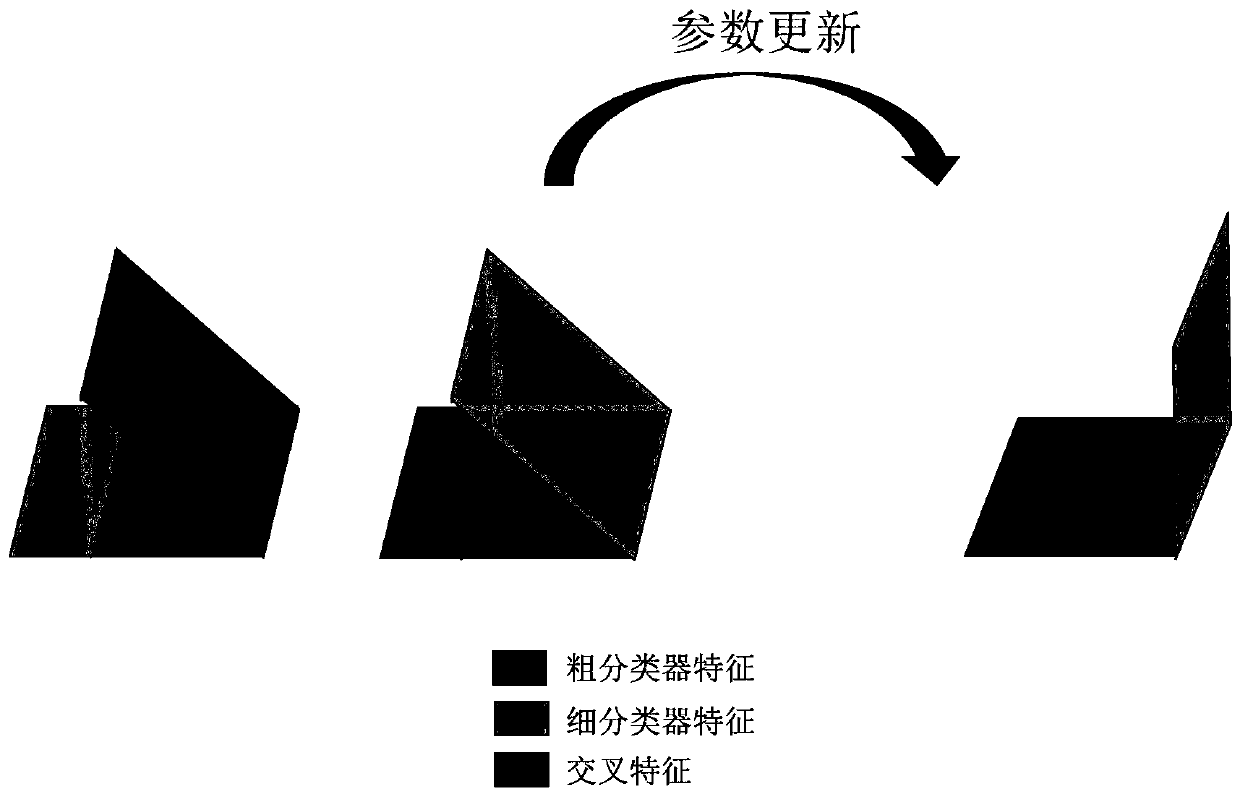Construction method of multi-task classification network based on orthogonal loss function
A loss function and classification network technology, applied in neural learning methods, biological neural network models, neural architectures, etc., can solve problems such as lack of common features and unique feature distinctions, and achieve the effect of improving separability and suppressing interference
- Summary
- Abstract
- Description
- Claims
- Application Information
AI Technical Summary
Problems solved by technology
Method used
Image
Examples
Embodiment Construction
[0032] The present invention will be further described below in conjunction with the accompanying drawings and embodiments.
[0033] Step 1: Build a hierarchical label tree;
[0034]Because there are visual similarities between species belonging to the same race, a hierarchical label tree is constructed using the affiliation relationship between species in nature for different databases. The structure of the hierarchical label tree is divided into two layers. The first layer of labels is the coarse category label of the image, which is divided according to the species the image belongs to. The second layer label is the fine category label of the image, which is defined according to the subcategory of which species the image belongs to. The branches of the tag tree represent affiliation relationships. Caltech-UCSD Birds-200-2011 is a bird database, which is constructed by consulting encyclopedia knowledge and dividing rough categories according to the families and genera of bi...
PUM
 Login to View More
Login to View More Abstract
Description
Claims
Application Information
 Login to View More
Login to View More - R&D
- Intellectual Property
- Life Sciences
- Materials
- Tech Scout
- Unparalleled Data Quality
- Higher Quality Content
- 60% Fewer Hallucinations
Browse by: Latest US Patents, China's latest patents, Technical Efficacy Thesaurus, Application Domain, Technology Topic, Popular Technical Reports.
© 2025 PatSnap. All rights reserved.Legal|Privacy policy|Modern Slavery Act Transparency Statement|Sitemap|About US| Contact US: help@patsnap.com



